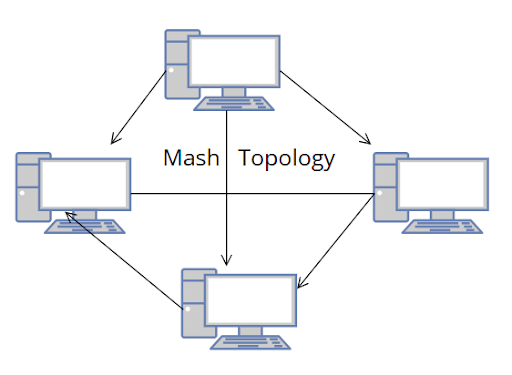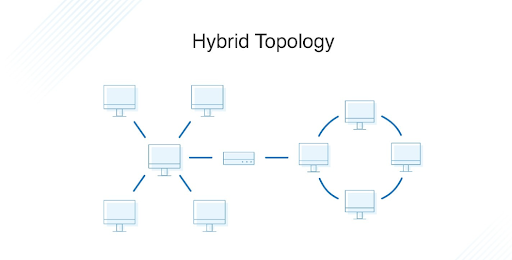Network topology simply means how different parts of a computer network—like devices and connections—are arranged and linked together to share data.It defines how different components like routers, switches, servers, and end devices are interconnected and how data flows within the network. Topology can be represented in two ways: physical topology, which illustrates the actual layout of cables and hardware, and logical topology, which describes the path through which data flows regardless of physical connections.
Why Network Topology Matters
A well-structured topology improves:
- Network performance
- Fault tolerance and scalability
- Ease of maintenance and troubleshooting
- Security configuration and control
Selecting the appropriate topology ensures optimized communication paths, cost-effective infrastructure, and reduced network congestion.
Types of Network Topology
1. Bus Topology
In a bus topology, all devices share a single communication line (backbone). Each node is directly connected to this central cable.

Advantages:
- Easy to implement and extend
- Requires less cable than other topologies
- Cost-effective for small networks
Disadvantages:
- Entire network shuts down if the backbone fails
- Performance degrades as more devices are added
- Difficult to isolate faults
Use Cases:
- Small office networks
- Temporary or testing environments
2. Star Topology
In star topology, every node connects to a central hub or switch. All communication goes through this central device.

Advantages:
- Easy to manage and troubleshoot
- Failure of one node doesn’t affect the rest
- Scalable by simply adding more nodes
Disadvantages:
- If the central hub or switch fails, it can cause the entire network to stop working.
- Requires more cable than bus topology
Use Cases:
- LAN environments in schools, offices, and large buildings
3. Ring Topology
Ring topology arranges devices in a circular loop. Each device is connected to two others, forming a closed path for signals.

Advantages:
- Orderly data transfer with reduced collision
- Suitable for high-speed networks
Disadvantages:
- If one device or connection fails, it can break the loop and disrupt the entire network’s communication
- Troubleshooting can be complex
Use Cases:
- Metropolitan Area Networks (MANs)
- Fiber Distributed Data Interface (FDDI)
4. Mesh Topology
In a mesh topology, each node is connected to every other node. It ensures high redundancy and fault tolerance.

Advantages:
- Reliable and robust
- Faults in one link do not affect data transmission
- High security due to dedicated links
Disadvantages:
- Expensive to install and maintain
- Complex configuration
Use Cases:
- Military communication systems
- High-availability networks
5. Tree Topology
Tree topology is a hybrid of bus and star topologies. It features groups of star-configured networks connected to a linear bus backbone.

Advantages:
- Scalable and hierarchical
- Easy to manage in segments
Disadvantages:
- Backbone failure brings down entire segments
- More cabling is required
Use Cases:
- Enterprise-level networks
- Hierarchical organizational systems
6. Hybrid Topology
A hybrid topology combines two or more different topologies to leverage the strengths of each.
Advantages:
- Highly flexible and scalable
- Customizable to meet specific network requirements
Disadvantages:
- Complex design and management
- Cost-intensive
Use Cases:
- Data centers
- Corporations with varied departmental needs
Choosing the Right Network Topology
Selecting the correct network topology depends on several key factors:
- Network size and scale
- Budget constraints
- Required performance and speed
- Future scalability
- Fault tolerance needs
- Security requirements
Each topology presents its own strengths and trade-offs. For instance, while mesh topology is ideal for mission-critical systems, bus topology may suffice for a temporary setup or small network.
Network Topology in Wireless Networks
Wireless networks adopt a more flexible and dynamic topology structure. While logical topologies may resemble mesh or star, their physical layout is far less constrained due to the absence of cabling. Modern wireless technologies, including Wi-Fi mesh networks, are effectively expanding the application of mesh topology principles.

No comments:
Post a Comment